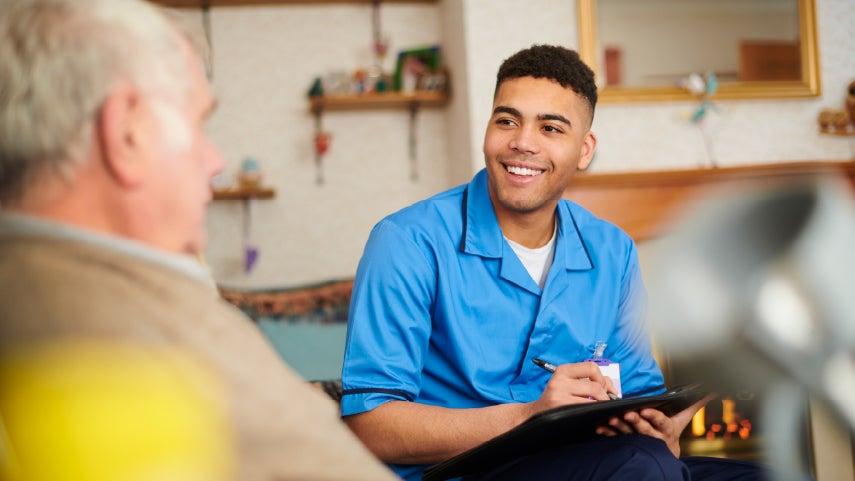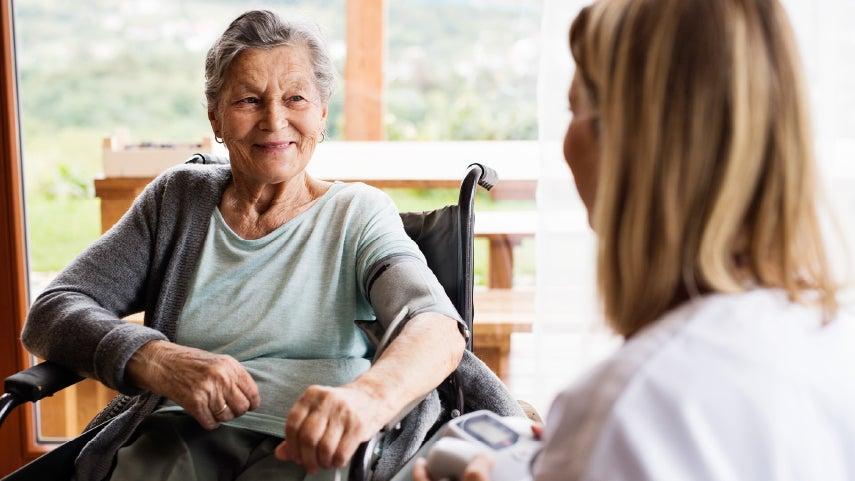
Related Topics
You’re standing in the middle of a forest. Tall trees loom all around. The landmarks that were once familiar to you have all vanished. This is a new frontier. At first, all you see are the trees. Then, slowly, new information presents itself to your view.
In one direction, there are signposts on the trees that provide guidance. They tell you where you are, where to go next, and what resources are available to you. In the distance, you also begin to make out the shapes of people holding out their open arms. These people are there to help.
The question is which direction will you go: Toward the signposts and the people or back into the thick forest? In other words, will you accept help or will you go it alone?
Every day, caregivers are presented with this conundrum. We are hard-wired to figure things out for ourselves and manage things by ourselves. But caregiving does not need to be—and in fact shouldn’t be—a go-it-alone experience. Seeking out help and widening your circle to include other people and other services such as respite care and support groups will help you round out your caregiving success strategy .
Why widening your caregiving circle matters
Take out a piece of paper and begin to jot down your daily activities and also those that you do on a weekly or monthly basis. Write down everything you can think of that you do for yourself (making breakfast, watching a favorite program, paying bills, taking care of a pet, etc.) and everything that you do for the person you’re providing care for (bathing, putting on compression stockings, making special meals, tuning the radio to a favorite channel, etc.). The list will likely be pretty long. We do more throughout any given day than we often take the time to think about. Once you have a starter list, begin to think about those activities where you could really use some help. Start with yourself first and try not to hold back. Remember: Others want to help you; they just need you to ask them. Then, think about the people in your life who could assist and what they might like most doing. If you have a friend or family member who is especially good at organizing events, you might even designate that person with the role of orchestrating all of these activities. Your list may look like the example below:
|
Sample Circle of Care for Your Needs | ||
|
Activity |
Who Can Help |
Frequency |
|
Yard work |
Neighbor |
Once a month |
|
Laundry |
Sister |
Once a week |
|
Meals |
Book club group |
Once a week, in rotation |
|
Grocery shopping |
Nephew |
Once a week |
|
Rides to appointments |
Friend |
As needed |
Create a similar list that identifies the needs of your care recipient and those individuals or services that can help. These lists will change over time, but having everything written down in one place will help you manage the many activities you do every day. The final step, of course, is to pick up the phone and ask your chosen individuals for help.
What is respite care and how does it work?
Respite care is temporary or emergency care for a care recipient, designed to give you—the family caregiver—a break from caregiving to take a break, attend appointments, run errands, or simply recharge. The length of respite care varies, depending on your needs and your care recipient’s needs. It can be for a few hours, overnight, all day, several days, or even weeks. Respite care can be provided in various settings, too, including in-home care, adult day centers, or residential facilities.
The benefits of respite care are many and include improved caregiver health, wellness, and satisfaction with life, enhanced ability to cope with stress, improved attitudes toward the care recipient, less need to move the care recipient from home to a facility, reduction of family and marital conflict through improved family functioning, and lowered chances of abuse and neglect of the care recipient.
Types of respite care include free in-home care by friends or family, paid in-home care by home health aides and concierges, services such as adult day care and church-based eldercare, and care provided by long-term care facilities (group homes, assisted living, nursing homes, etc.). Most home health aides are CNAs (Certified Nursing Assistants) who are trained to help with activities of daily living and some instrumental activities of daily living. Most do only light housework, especially if they work for an agency and they cannot give medications. If you consider hiring a non-agency home health aide, you may be responsible for reporting your payments to tax authorities. However, you may also be able to deduct the payments when filing taxes. If you have questions, consult a tax attorney or tax accountant, preferably one with eldercare experience.
Respite care in the U.S. falls under Long-Term Services and Support (LTSS), which is available to eligible disabled persons through Medicaid and some insurance programs. Payment options for respite care include private pay; employer-based insurance or family leave programs; private or long-term care insurance; church-based assistance; or needs- based aid at federal, state, or local levels.
You can find more information on respite care at:
- ARCH National Respite Network which houses a National Respite Locator Service
- Family Caregiver Alliance
- National Adult Day Services Association
What you should think about when joining a support group
Caregiver support groups come in all shapes and sizes from face-to-face support group meetings to online chat groups. Most medium-sized to larger communities host local caregiver support groups, If you live in a smaller town or rural area, you may need to travel far to attend a physical meeting. If geography or other issues keep you from attending meetings, a phone support group might work instead.
Think about what you’re comfortable with and the type of support you want right now. Many people prefer groups facilitated by professional social workers, psychotherapists, or other health care specialists. These types of groups tend to provide more structured conversations and allow for more detailed answers to your questions. Unmediated groups or those led by non-professionals are also very useful, but can sometimes be monopolized by a few people. However, this type of group might suit you especially if you’re looking simply gather information rather than giving it at first.
With any type of group that you join, understand the group’s rules on privacy, confidentiality, and personal conduct during meetings. Confidentiality is especially important, since some group members may choose to share personal information or describe family conflicts when the group may include people from the local area who know the family. For that reason, a group mediated by a professional may be the best choice.
Most hospitals and large health centers, some churches, and community services such as public libraries sponsor or provide meeting space for support groups of all kinds. Check online, at your local senior center, or with your health care provider for in-person caregiver support groups that may meet at the facilities in your area. They are almost always free.
You can find more information on caregiver support groups at:
- Finding the Right Support Group on the Caregiver Action Network (CAN):
- Caring.com Online Support Groups
If you decide to join an online group, exercise caution. Beware of those promote their own services and products in public forums and never give out confidential or identifying information. Identity thieves, stalkers, and other criminals may pretend to be your friend to obtain your personal information.
Caregiving can be physically, emotionally, and mentally demanding, but it doesn't have to be a solitary journey. By widening your circle, embracing respite care, and engaging with support groups and classes, you can access the resources, encouragement, and companionship needed to navigate your caregiving responsibilities with greater resilience and well-being. Remember that prioritizing your own self-care is not selfish—it's essential for providing the best possible care to your loved one.



